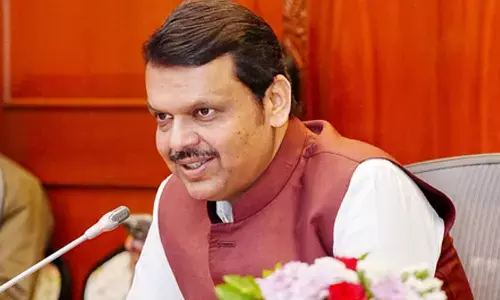A vanishing tribe

Living far from the madding crowd and on the fringes of the deep forests in the bio-diverse Western Ghats off coastal Karnataka are the Halakki Vokkaligaru, a vanishing tribe, whose younger generation is a victim of modern lifestyle.
Living far from the madding crowd and on the fringes of the deep forests in the bio-diverse Western Ghats off coastal Karnataka are the Halakki Vokkaligaru, a vanishing tribe, whose younger generation is a victim of modern lifestyle.
Having survived over the centuries carrying the hoary tradition of their ancestors, the aboriginal older generation, especially its womenfolk, is at their wits' end on how to perpetuate their rich legacy. "From being the last generation, we are wary of becoming a lost generation, as our progeny is not interested in following values, customs and traditions or living our way of life. They are after creature comforts and modern life at the cost of our moorings," the unique tribal community's head, Chaudappa, 60, told IANS.
Spread across scores of hamlets in Uttara Kannada district, about 470 km from Bangalore, the Halakki tribe is grappling with the challenge of preserving its rich culture, rituals, artifacts and rustic life in the face of resistance from generation next.
Literacy and exposure to urban lifestyle in nearby towns alienated the tribal kin to abandon their colourful attire comprising distinct jewellery, colourful beads and bangles, long necklaces, heavy ear and nose rings and wearing a sari without a blouse.
"Our daughters and grand-daughters don't like to wear our unique dress. They prefer salwar-kameez, leggings and tops. The sons are worse, as they are fond of wearing jeans and T-shirts rather than our tribal dress," lamented 75-year-old Sukri Bommagowda, a grand old lady of the tribe.
Gone are the good old days when a boy came of age, his parents would select a girl and pitch a tent in front of her hut till she agreed to marry him. "Believe it or not, matrimony ads are posted online (Bandhan.com) under 'Brides and Grooms for Halakki Vokkaligaru'. Instead of elders or parents, boys and girls choose partners and decide when to tie the nuptial knot. In our days, we could not dare meet our prospective bride before the wedding, as it was the prerogative of our elders to decide whom to marry and when," Choudappa recalled.
Like festivals, a wedding in a Halakki family was a grand occasion for all the folks in the hamlet to gather and celebrate with a common drinking and feasting session. It is no longer so.
According to the 2011 census, the majority of the Halakki tribals, numbering over 2,00,000 dwell in a cluster of villages dotting the coastline from Sirsi to Karwar near Goa. When their population multiplied in the past, many families migrated to Dakshina Kannada and Shivamogga district in the Malnad region for more land, space and better life.
"Halakki tribe is different from other tribes like Siddhis or Soligas. Their ancestors were from Rayalaseema forests in Andhra Pradesh and migrated to north and coastal Karnataka over the centuries but retained their identity, customs and way of life," folklorist and documentary film maker Sirigandha Sreenivasa Murthy told IANS.
Interestingly, gender ratio (2:1) has been in favour of females unlike in other communities or parts of the country, as women are worshipped and considered a descendant of the tribe's Tulasi Katti mythological goddess or deity.
"They still live in mud houses with dry leaves of coconut or palm trees as sloping roofs and small windows on three sides for ventilation and breeze. Every hut has a Tulasi (herbal plant) in the front. Water is drawn from wells or streams," Murthy said.
Growing paddy and seasonal crops continues to be the tribe's main livelihood. Captivated by the grace, beauty and old world charm of the womenfolk, Bangalore-based ace lensman K Venkatesh ventured into their secluded koppas (settlements) to capture them in their grandeur, wearing traditional attire with beads and chains for posterity.
"I was fascinated by the older womenfolk being so proud of their unique dress, jewellery, including beads, necklaces, nose rings and a dozen bangles on their hands, which they wear all the time as a prized possession," Venkatesh said at a photo expo he held at the Karnataka Chitrakala Parishat here.


















